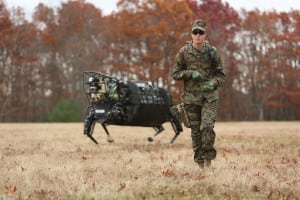
The Army is at work developing plans for equipping all of its ground forces and aviation units with robots and autonomous systems that will both multiply human soldiers’ capabilities and perform dangerous tasks that would otherwise risk human life.Chief of Staff Gen. Mark Milley has said repeatedly that future warfare – beyond 2025 – will involve robots as a basic element of ground combat. Army scientists are preparing to make that vision a reality, but are taking a slow, deliberate…

 By
By 








